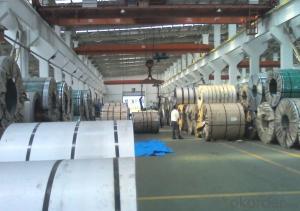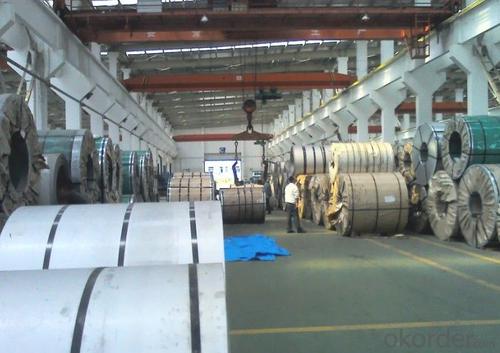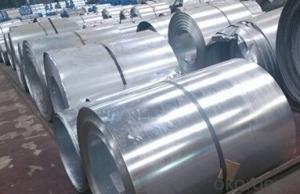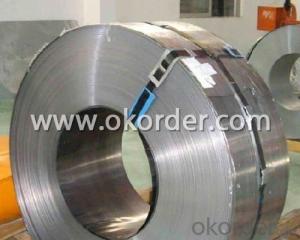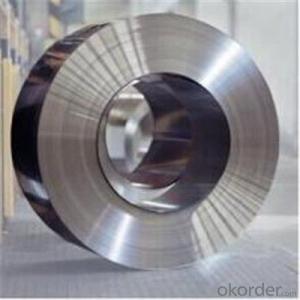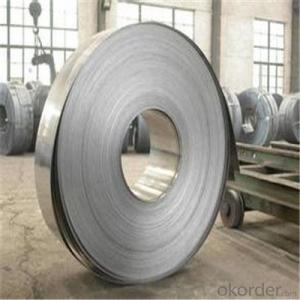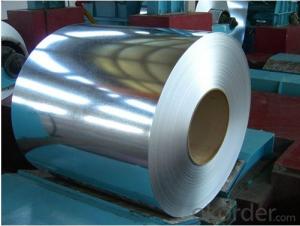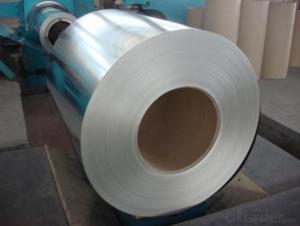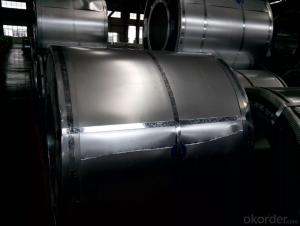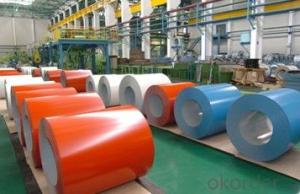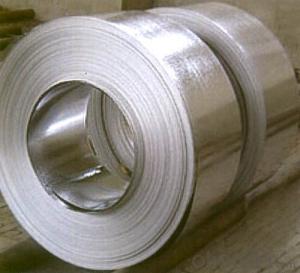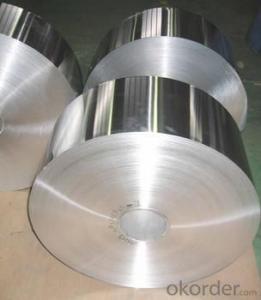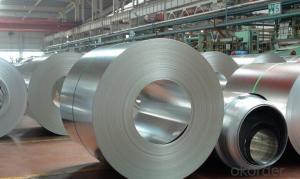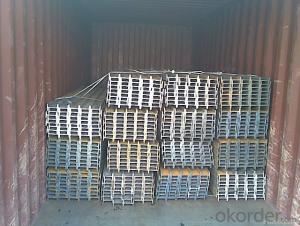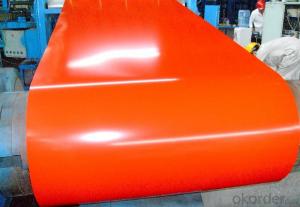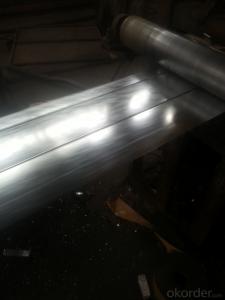GI Hot Dipped Galvanized Steel Sheet In Coils
- Loading Port:
- Qingdao
- Payment Terms:
- TT OR LC
- Min Order Qty:
- 25 m.t.
- Supply Capability:
- 10000 m.t./month
OKorder Service Pledge
OKorder Financial Service
You Might Also Like
GI Hot Dipped Galvanized Steel Sheet In Coils
1.Structure of GI Hot Dipped Galvanized Steel Sheet In Coils
GI Hot Dipped Galvanized Steel Sheet In Coils is one kinds of building material on construction.Steel sheet in melting zinc trough, the sticking of a layer of zinc sheet. At present mainly adopts continuous galvanizing process, namely the continuous roll of steel plate in the melt zinc plating tank made of galvanized steel sheet; Alloying of galvanized steel. This kind of steel plate is made by hot dip method, but after the slot, immediately heated to a temperature of about 500 ℃, it make the generation of zinc and iron alloy membrane. This kind of galvanized volumes with good coating of the sex and weldability.
2.Main Features of GI Hot Dipped Galvanized Steel Sheet In Coils.
1) Rust-proof
2) Water-proof
3)Durable using
3. GI Hot Dipped Galvanized Steel Sheet In Coils Images
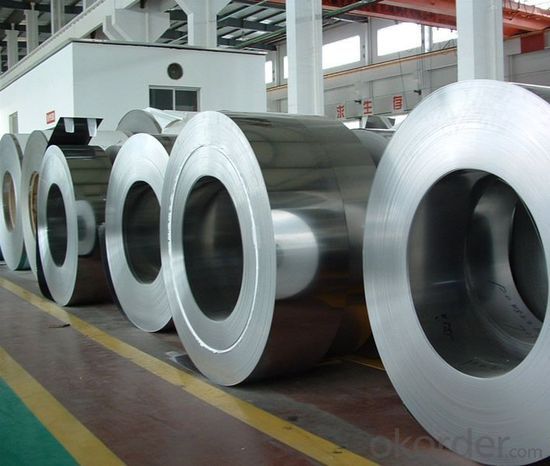
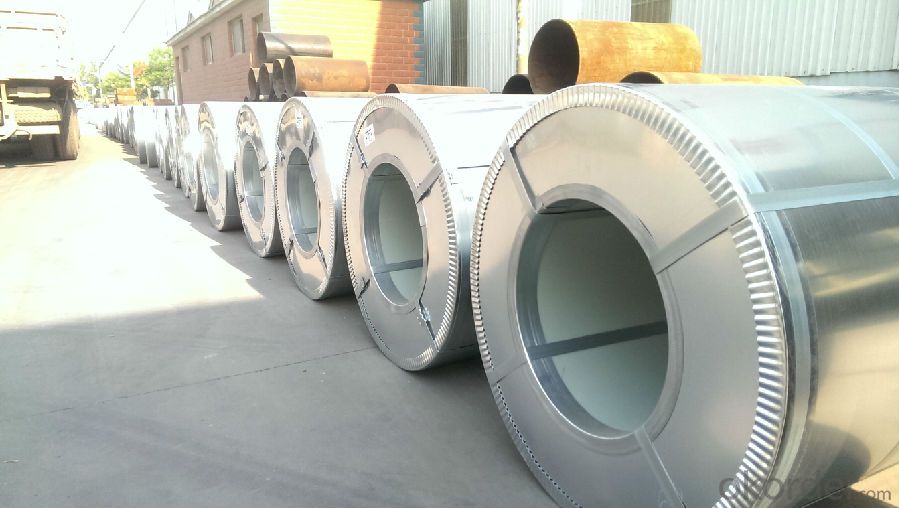
4. GI Hot Dipped Galvanized Steel Sheet In Coils Specification
1)Based raw material: Hot rolled steel coils or Cold rolled steel coils
2) Thickness
3) Width
4)Coating mass
5) Spangle
6)Surface treatment
7)Coil inner diameter
8)Painting kind
9)Painting color
10)Painting thickness
5.FAQ of GI Hot Dipped Galvanized Steel Sheet In Coils
We have organized several common questions for our clients,may help you sincerely:
①How about your company?
A world class manufacturer & supplier of castings forging in carbon steel and alloy steel,is one of the large-scale professional investment casting production bases in China,consisting of both casting foundry forging and machining factory. Annually more than 8000 tons Precision casting and forging parts are exported to markets in Europe,America and Japan. OEM casting and forging service available according to customer’s requirements.
②How to guarantee the quality of the products?
We have established the international advanced quality management system,every link from raw material to final product we have strict quality test;We resolutely put an end to unqualified products flowing into the market. At the same time, we will provide necessary follow-up service assurance.
③How is the properties of the products?
The material and mechanical properties
Material | Tensile test | ||||||
Rel (MPa) | Rm (MPa) | Elongation | |||||
1.8~<2.0< span=""> | 2.0~<2.5< span=""> | 2.5~<3.2< span=""> | 3.2~<4.0< span=""> | ≥4.0 | |||
SPHC | ≥270 | ≥29 | ≥30 | ≥31 | ≥32 | ≥32 | |
SPHD | ≥270 | ≥32 | ≥33 | ≥35 | ≥37 | ≥39 | |
SPHE | ≥270 | ≥33 | ≥35 | ≥37 | ≥39 | ≥41 | |
SS330 | ≥205 | 330~430 | ≥26 | ||||
SS400 | ≥245 | 400~510 | ≥24 | ||||
SAPH370 | ≥370 | ≥255 | ≥32 | ||||
- Q: What are the specifications for steel strips used in the production of fasteners?
- The production of fasteners requires steel strips with varying specifications, depending on the specific application and requirements. However, there are some common specifications for these steel strips: 1. Material: Typically, mild steel, also known as low carbon steel, is used for fastener production. This type of steel is cost-effective and offers good strength and ductility. 2. Dimensions: Steel strips for fasteners are usually supplied in coils or cut-to-length strips. The strip width can range from a few millimeters to several centimeters, depending on the size of the fasteners being produced. The strip thickness also varies based on the specific application and requirements. 3. Surface Finish: Steel strips used in fastener production often undergo surface treatments to enhance their corrosion resistance and appearance. Common surface finishes include zinc plating, galvanizing, or applying protective coatings like phosphate or black oxide. 4. Tensile Strength: The steel strip's tensile strength is a crucial specification as it determines the maximum load the fastener can withstand without breaking or deforming. The specific tensile strength requirement depends on the application and the type of fastener being produced. 5. Hardness: The hardness of the steel strip measures its resistance to indentation or deformation. Different fasteners may require different hardness levels to ensure they can withstand their intended application without failure. 6. Composition and Chemical Properties: Steel strips used in fastener production must meet specific chemical composition requirements to ensure desired mechanical properties. The levels of carbon, manganese, sulfur, phosphorus, and other elements are controlled to achieve the desired strength, ductility, and other performance characteristics. It is important to note that these specifications can vary depending on the specific standards and regulations followed in different industries or regions. Therefore, consulting relevant industry standards or the manufacturer's specifications is advisable for precise details about the steel strips used in fastener production.
- Q: Are steel strips suitable for high-stress applications?
- Yes, steel strips are suitable for high-stress applications. Steel is known for its high strength and durability, making it an ideal material for withstanding heavy loads and extreme conditions. Steel strips can be designed and manufactured to meet specific requirements, ensuring they are capable of handling high-stress situations effectively.
- Q: How are steel strips processed for welding?
- Steel strips are processed for welding through a series of steps to ensure a strong and durable bond. Firstly, the steel strips are cleaned thoroughly using solvents or degreasers to remove any dirt, rust, or contaminants. This step is crucial as it helps to achieve a clean surface for better welding results. After cleaning, the steel strips are often preheated to minimize the risk of cracking during the welding process. Preheating helps to reduce the thermal stress and allows for a more controlled and uniform heating of the steel. The temperature and duration of preheating depend on the type and thickness of the steel being welded. Next, the steel strips are aligned and clamped in position to prevent movement during welding. This ensures accurate and precise welding joints. Welding techniques such as shielded metal arc welding, gas metal arc welding, or resistance welding may be used depending on the specific requirements of the project. During welding, a filler material is often introduced to create a strong and continuous weld. The filler material is chosen based on the type of steel being welded and the desired properties of the final joint. The welder carefully controls the heat and speed of the welding process to ensure proper fusion between the steel strips and the filler material. After welding, the steel strips are typically subjected to a post-weld treatment. This may involve processes like stress relieving or tempering to reduce internal stresses and improve the mechanical properties of the joint. Post-weld treatments are essential to enhance the strength, toughness, and durability of the welded steel. Finally, the welded steel strips may undergo additional processes such as grinding or polishing to achieve a smooth and uniform surface. This ensures that the welded area is aesthetically pleasing and free from any sharp edges or imperfections. Overall, the processing of steel strips for welding involves cleaning, preheating, alignment, welding with filler material, post-weld treatment, and surface finishing. These steps are carefully executed to produce high-quality welded joints that meet the required standards and specifications.
- Q: What are the different types of edge conditions for steel strips?
- There are various types of edge conditions for steel strips, depending on the specific requirements of the application. Some common types include: 1. Mill Edge: This is the standard edge condition produced during the steel manufacturing process. It is characterized by a slightly rounded or rolled edge, resulting from the hot rolling or cold rolling process. 2. Slit Edge: In this edge condition, the steel strip is slit to the desired width using a slitting machine. The edges are generally sharp and may have burrs or irregularities. 3. Deburred Edge: After slitting, the edges of the steel strip can be deburred to remove any sharp edges or burrs. This is often done by using machines or tools to smooth out the edges, ensuring a safer handling and preventing damage to subsequent processes or equipment. 4. Rounded Edge: Some applications require steel strips with rounded edges to prevent damage or injury. The edges can be machined or rolled to achieve a smooth, rounded profile. 5. Beveled Edge: Beveled edges are commonly used in applications where two steel strips need to be joined together, such as in welding or butt joint applications. The edges are machined to have a specific angle or bevel, allowing for easier and stronger welding or joining. 6. Customized Edge Conditions: Depending on the specific requirements of a particular application, customized edge conditions can be provided. These may include special edge profiles, chamfered edges, or unique finishes to meet specific design or functional requirements. It is important to note that the choice of edge condition for steel strips depends on factors such as the intended use, processing requirements, and budget considerations. Consulting with steel suppliers or manufacturers can help determine the most suitable edge condition for a particular application.
- Q: How do steel strips perform in terms of creep resistance?
- Steel strips generally have good creep resistance due to their high strength and stiffness. The low carbon content in steel helps in minimizing the creep deformation at high temperatures and under prolonged stress. Additionally, the microstructure and composition of the steel can also be modified to enhance its creep resistance. Overall, steel strips are known for their favorable performance in terms of creep resistance.
- Q: What are the factors that affect the cost of steel strips?
- The factors that affect the cost of steel strips include the current demand and supply of steel, the cost of raw materials used in steel production, the level of competition in the steel industry, fluctuations in currency exchange rates, transportation and logistics costs, and government regulations and tariffs. Additionally, factors such as energy costs, labor wages, and technological advancements in the steel manufacturing process can also influence the overall cost of steel strips.
- Q: How do steel strips differ from steel sheets?
- Steel strips differ from steel sheets in terms of their width and thickness. Steel strips are narrower and thinner compared to steel sheets. Strips are typically less than 600mm in width and have a thickness ranging from 0.2mm to 6mm, whereas steel sheets are generally wider and thicker, with widths exceeding 600mm and thicknesses above 6mm.
- Q: Can steel strips be used in the manufacturing of boat hulls?
- Yes, steel strips can be used in the manufacturing of boat hulls. They are commonly used in larger vessels due to their strength, durability, and ability to withstand harsh marine environments.
- Q: How are steel strips processed for surface shearing?
- Steel strips are processed for surface shearing through a series of steps to ensure a smooth and precise cutting process. First, the steel strips are cleaned to remove any dirt or debris that could interfere with the shearing process. This is typically done by using a combination of chemical cleaning agents and mechanical scrubbing. Once the strips are clean, they are then fed into a shearing machine. This machine is equipped with sharp blades that move in a vertical or horizontal motion, depending on the desired cut. The steel strips are positioned accurately, and the shearing blades are adjusted to the desired cutting length. As the shearing blades come into contact with the steel strips, they apply a significant amount of force to cut through the material. The shearing blades move along the length of the steel strips, creating a clean and precise cut. The shearing machine is often equipped with a back gauge system to ensure accurate positioning of the steel strips. After the shearing process, the cut steel strips are inspected for any imperfections or defects. Any rough edges or burrs are removed using a deburring process, which can involve grinding or sanding the edges to create a smooth finish. Finally, the processed steel strips are ready for further use or application. They may be used in various industries, such as automotive, construction, or manufacturing, depending on the specific requirements. The surface shearing process ensures that the steel strips are cut accurately and efficiently, allowing for high-quality end products.
- Q: How do steel strips perform in terms of electromagnetic shielding?
- Steel strips are highly effective in terms of electromagnetic shielding. Due to their conductive properties, they can efficiently block and divert electromagnetic waves, providing excellent protection against interference and reducing electromagnetic radiation.
Send your message to us
GI Hot Dipped Galvanized Steel Sheet In Coils
- Loading Port:
- Qingdao
- Payment Terms:
- TT OR LC
- Min Order Qty:
- 25 m.t.
- Supply Capability:
- 10000 m.t./month
OKorder Service Pledge
OKorder Financial Service
Similar products
Hot products
Hot Searches
Related keywords
